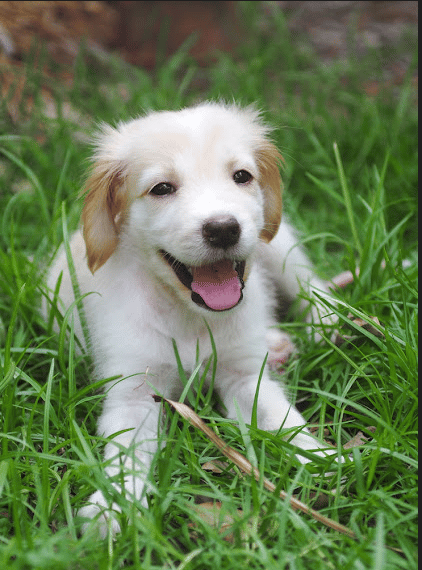It’s natural to reach for a tube of Neosporin to help you heal if you get a cut or scrape. If your dog has a minor wound, you may be tempted to do the same. However, is Neosporin safe for dogs to lick their paws, ingest, or ears? Can you use any other antibiotic topicals on your dog? The answer is maybe—it all depends on a few variables.
What is Neosporin?
Neosporin is an antibiotic ointment used to treat minor external wounds in dogs. It has three kinds of antibiotics that can be put on the skin to kill bacteria and help wounds heal:
- Neomycin (hence the name)
- Polymyxin B
- Bacitracin
These antibiotics work well together to protect against a wide range of bacteria, prevent infection, and relieve pain. In case of an emergency, Neosporin is an excellent product to have in your first aid kit. Neosporin substitute for dogs.
The lotion-like texture makes it simple to apply and forms a protective layer over the wound to keep bacteria out of your dog’s system.
Can You Put Neosporin on Dogs?
Is Neosporin safe to use on dogs? In a nutshell, you can use Neosporin on dogs. However, this may not always be the safest and best option for all canines. When it comes to dog wound care, Neosporin on dogs is an option, not a requirement. Based on what we’ve learned about the ingredients of Neosporin on dogs, they usually have positive outcomes when used on dogs. When used incorrectly, they can cause a variety of side effects, including hearing loss.
Furthermore, Neosporin is not intended for canines. Because it is primarily a human drug, it should not be used on dogs on a regular basis, if at all. You should never attempt to self-medicate your pet with drugs, even for something as minor as a scratch.
Neosporin is measured and made for adults, who are much bigger than dogs and have very different bodies. Smaller dogs can have problems with this, but even bigger dogs can have bad side effects if they are not treated by a vet.
If your dog has a small cut or scrape and you want to use Neosporin on it, talk to your vet first. This will help your vet tell you how to use the medicine and how much to give your dog. While you’re at it, ask your vet about the symptoms of infection and anything else you should be on the lookout for. If your dog begins to show signs of infection, you should take them to the vet as soon as possible. Infections can be treated more effectively and safely by your veterinarian than you can at home.
Is Neosporin Safe for Dogs to Lick
If your dog licks Neosporin off a wound, there’s probably nothing to be concerned about. Minor side effects, such as stomach upset, may occur when taking Neosporin. However, none of these side effects are likely to be serious.
Having said that, if your dog licks it off, Neosporin will be useless for wound management! As a result, it might be a good idea to experiment with methods to prevent wound licking. This will not only prevent your dog from removing the Neosporin, but it will also slow down the healing process.
Depending on the situation, you could use the “cone of shame,” a sock, or a t-shirt to stop the dog from licking. If your dog has a scratch on his or her trunk, now is a good time to dig out those cute dog clothes. You could also try using baby clothes without buttons if you have a small dog.
Is Neosporin Safe for Dogs Paws
Our daring friends are likely to sustain a few cuts and scrapes along the way. Most battleground scars are usually found on our dog’s paws and shins.
The only problem with putting Neosporin on a dog’s paws is that he will want to lick it off. It is not only dangerous for your dogs to ingest Neosporin, but it also defeats the purpose if it is licked off.
You could try bandaging the paw after applying Neosporin, but for many dogs, this will only increase their desire to lick and chew.
If you know your dog will leave his injured paw alone, you can proceed without concern. To keep your dog safe after using Neosporin, you should always keep an eye on him and be ready to stop him if he starts to bite or lick the area.
Is Neosporin Safe for Dogs Ears
It is not safe, and you should never use Neosporin around your dogs eyes, ears, or mouth. If Neosporin gets into your dog’s system, it will most likely make him sick. Only use Neosporin in areas away from these sensitive areas. Remember that your dog will want to lick the Neosporin off his wound. This not only defeats the purpose, but it may also make your dog sick.
Is Neosporin Safe for Dogs to Ingest
No, Neosporin is not safe for dogs to lick or ingest. Not only has neomycin been linked to hearing loss in dogs, but there are also concerns about how the ointment may affect gut bacteria. Dogs that consume Neosporin may experience intestinal distress, such as vomiting or diarrhea.
Basic Wound Care For Your Dog
Accidents occur. Because your dog is active and curious, it may get cuts, scrapes, or even holes in its skin at some point in its life. When these accidents occur, it is critical to know what to do. It can be difficult to determine the extent of an injury or what steps must be taken to treat it.
If the injury is more serious than a minor cut or abrasion, you should contact your veterinarian right away. Every dog owner should be ready to care for their dog at home in case of an emergency. It is recommended that you keep a first aid kit for your dog on hand. Here are the steps to take to keep your dog’s wound clean:
#1. If bleeding is detected, apply direct pressure to the cut to stop it.
Applying pressure aids in blood clotting and stops bleeding. You can do this with a gauze square or a clean paper towel.
#2. Keep the wound isolated.
Your dog may have multiple cuts. Examine your dog’s entire body for injuries, including the paw pads.
#3. Rinse the wound with water.
Rinse the area with warm water and/or saline to remove dirt, debris, and any foreign material. This can be accomplished with a large syringe found in most dog first aid kits. Avoid touching the syringe to the area, as this can aggravate the irritation. When you flush the area, you may notice that the cut is deeper than it appeared. Due to the fur covering the wound, it can be difficult to determine the severity of a cut in your dog. If, after flushing, you see that it’s more than a small cut or scrape, you should call your vet first.
#4. Clean the wound.
Using the syringe, flush the area with an antibacterial cleanser like chlorhexidine or povidone-iodine. Both of these items are commonly found in first-aid kits. Iodine and chlorhexidine should be diluted with water before being used on your dog. Then, blot the area gently with gauze. It is best to avoid using hydrogen peroxide to clean wounds because it slows healing.
#5. Monitor and observe.
Examine the wound carefully to ensure it is clean. If you see any dirt or debris, rinse it out again. Anything left in the wound could lead to infection. Over the next few days, or until the wound is visibly healing, keep a close eye on your dog’s cut. Contact your veterinarian if you notice any redness or swelling, or if there are any particles that you cannot remove. Taking a photo of the cut on a daily basis can help you monitor how your dog is healing and can be shared with your veterinarian.
Neosporin Adverse Effects on Dogs
When using Neosporin, keep an eye out for potential side effects like allergic reactions or contact dermatitis. An allergic reaction can cause red, scaly, or itchy skin. More serious side effects are uncommon, but they may include:
- Vomiting or diarrhea if ingested
- Irritation if used in the eyes
- Hearing loss, infection, and irritation if used in the ears
- Development of resistant infections
Unless otherwise directed by your veterinarian, do not combine Neosporin with other topical medications. Because Neosporin is only used externally, there is little chance that it will interact with any medications your pet is taking orally.
Neosporin Alternatives for Dogs
Other over-the-counter antibacterial treatments include silver sulfadiazine (SSD) ointment, bacitracin ointment, and polysporin ointment. But you can buy antibacterial products like Silver Honey, Vetricyn, and Sulfodene that are put on the dog’s skin over-the-counter at pet stores or your vet’s office.
These products should only be used on minor skin irritations and should not be used on large or deep wounds. If the scrape or cut you’re treating doesn’t heal within 24–48 hours, consult your veterinarian.
Over-the-counter topical products should not be used for severe injuries and should not be used in place of proper veterinary care. If your pet has a large or deep wound or a skin infection that covers a large area of the body, you should take him or her to the veterinarian.
To help your dog heal faster, he or she may prescribe oral antibiotics, medicated shampoos, a stronger topical ointment, or other targeted treatments. Together with oral antibiotics, topical therapy could be used to treat skin infections and wounds that are large or very bad.
How to Apply Neosporin on Dogs
After talking to your vet, you can give Neosporin to your dog in the same way you would give it to yourself. Rinse the affected area thoroughly with warm water and, if necessary, a drop of soap. After gently drying yourself off, put a thin layer of antibacterial ointment on the wound and cover it with a bandage that is safe for pets.
The Nurtured Pets Anti-Lick Strip Prevent Bandage ($5), Nutri-Vet Bitter Pet Bandage ($8), or PawFlex MediMitt Disposable Dog Bandage ($10) are all good options. Apply the bandage tightly, but not so tightly that it cuts off your dog’s blood flow. This would be very painful for your dog and might make him try to get the bandage off.
The bandage will keep dirt and bacteria from entering the wound. It will also keep your pet from licking the ointment off, which they will be tempted to do! You can also put a cone on your pet for a few days to prevent excessive licking. You should see improvement within 24 to 72 hours if you change the bandage once or twice a day.
Conclusion
So, to summarize the article, can you use Neosporin on your dog’s paws? Yes, it is safe to use on your dog’s paw. So long as the cut is minor and your dog does not lick or ingest any Neosporin. It is not toxic to dogs, but it may cause an allergic reaction in some. First, perform a small patch test on your skin.
In general, Neosporin is safe for dogs skin, paws, and ears. This is not to say that you should use it on every little cut and scrape. Instead, talk to your vet before using it, since they are the only ones who know your dog’s situation. While many of the ingredients in Neosporin have been used on dogs, it is always safer to seek the advice of your veterinarian before treating your pet.
Frequently Asked Questions
Is it OK to put Neosporin on a dog's wound?
If your dog got into a scrape, you can probably use a small amount of Neosporin to help prevent infection in the wound. This topical antibiotic trifecta may help with superficial injuries like scrapes, abrasions, and small cuts.
What antibiotic ointment is safe for dogs?
A cream containing neomycin or bacitracin is a good starting point for antibiotic cream for dogs. Both of these ingredients are generally safe for dogs and are widely available in a variety of stores.
What can I put on my dogs raw skin?
Chamomile, calendula, and green tea have properties that soothe and cool irritated skin while also reducing inflammation, making them excellent additions to an itchy dog bath. These soaks are ideal for dogs with hot, itchy skin that is at risk of being rubbed raw.
What is a natural antiseptic for dogs?
Vinegar, particularly apple cider vinegar, has long been used as a first aid treatment. Vinegar has been used to treat minor dog wounds because it not only disinfects the area and washes away unwanted fur and debris, but it also soothes the dog’s coat.
Related Articles:






